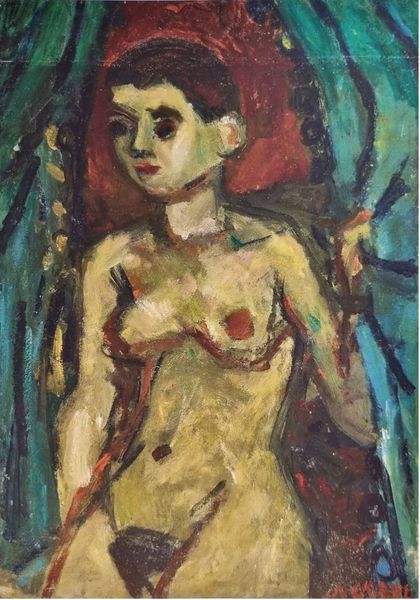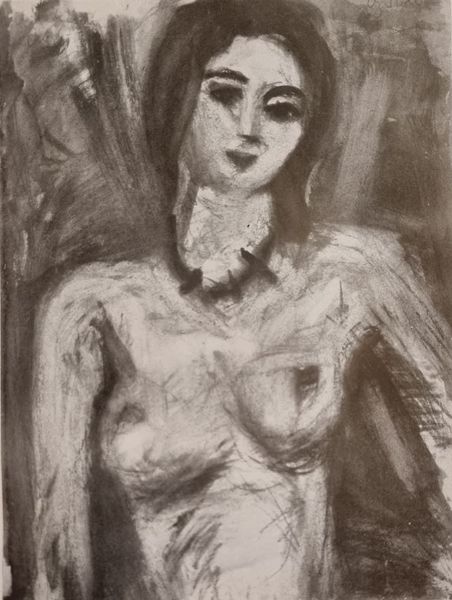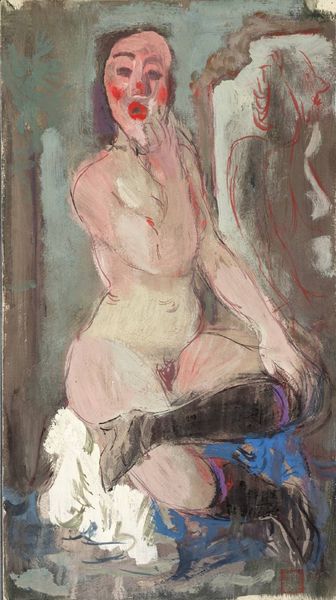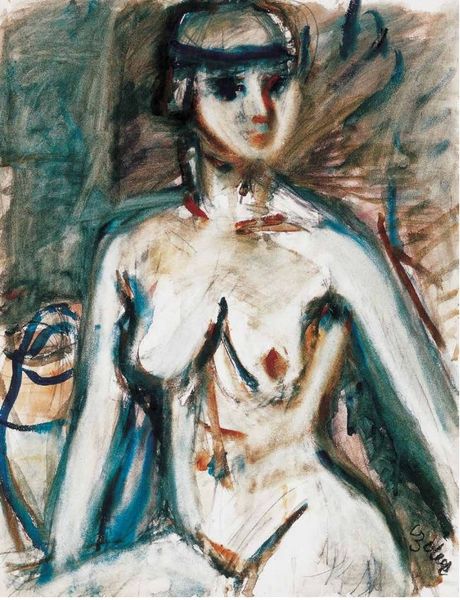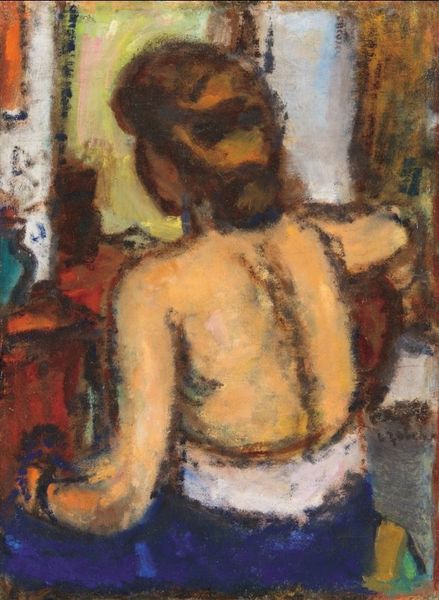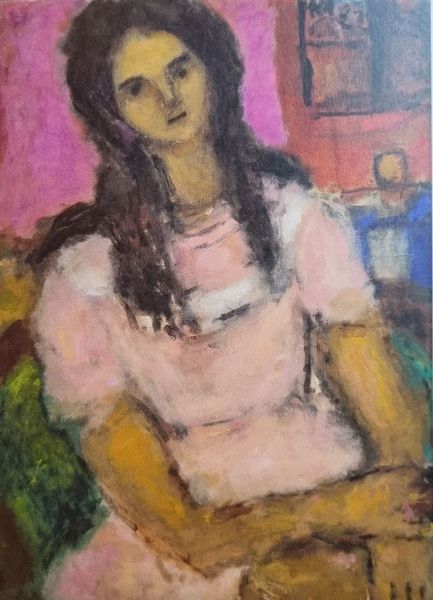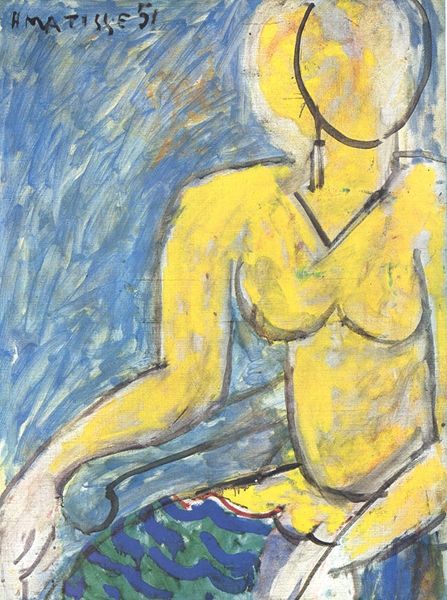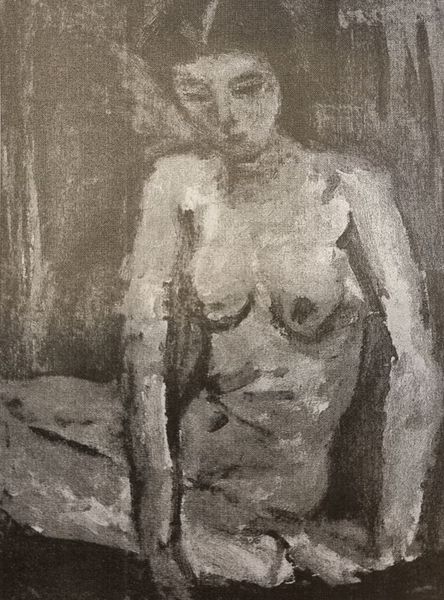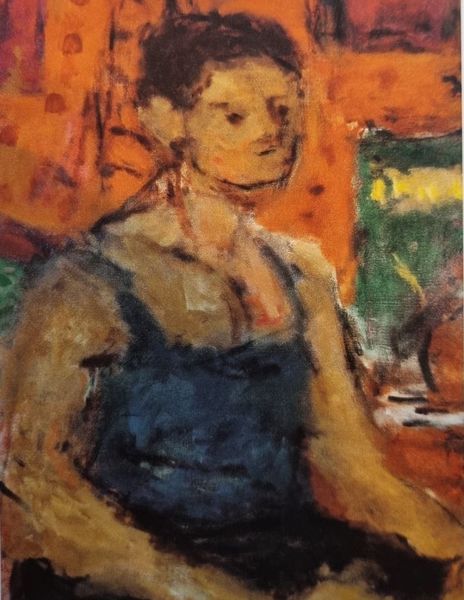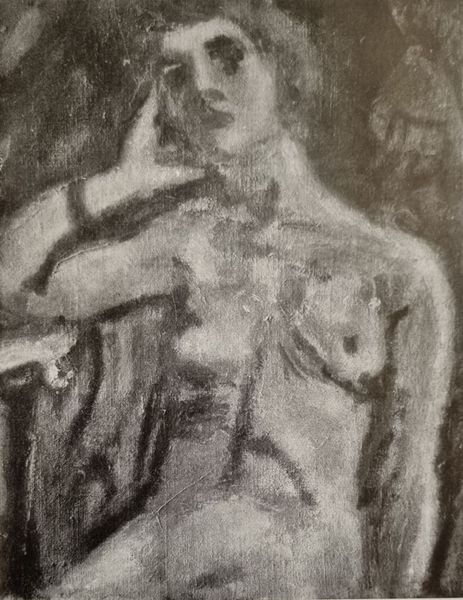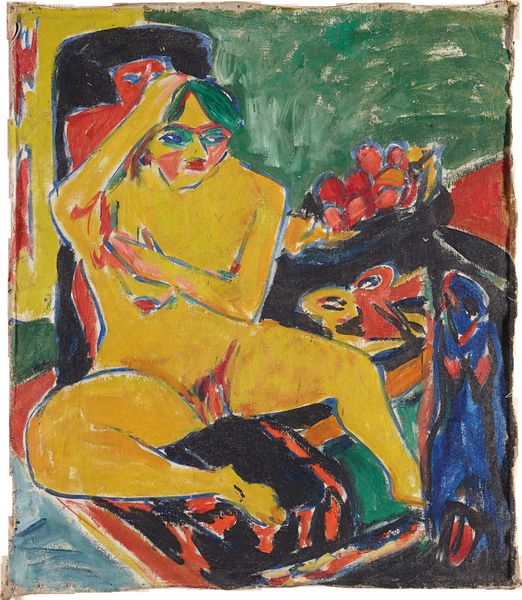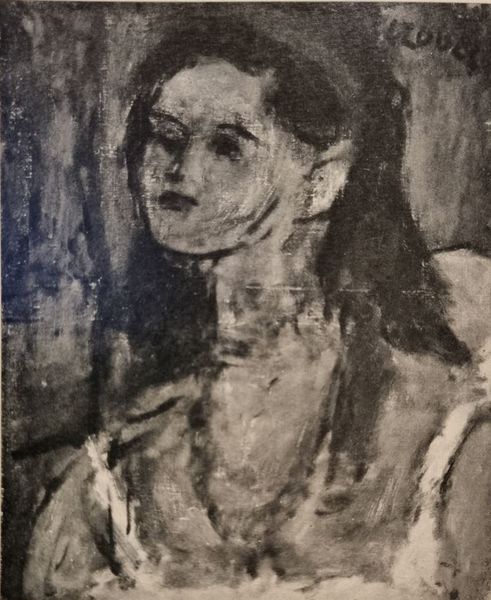
painting, oil-paint, impasto
#
portrait
#
painting
#
oil-paint
#
figuration
#
impasto
#
expressionism
Copyright: Bela Czobel,Fair Use
Editor: This is Bela Czobel’s "Girl with Red Gabushka" from 1955, an oil painting with a wonderfully textured, impasto feel. The subject's gaze feels very direct, almost challenging. What social narratives do you think this work engages with? Curator: Well, it’s interesting to consider this piece within the context of postwar expressionism and evolving ideas of femininity. The loose brushwork and intense gaze defy the more passive depictions of women in art history, don’t you think? Czobel, though working within the male-dominated Expressionist movement, perhaps subtly critiques societal expectations through this powerful portrayal. Do you perceive any intentional subversion here? Editor: It’s subtle, but I see what you mean. There's a vulnerability in her expression, but also a distinct sense of self-possession. It feels like Czobel acknowledges her position while simultaneously reclaiming it. Curator: Exactly. Her clothing, though suggestive, is rendered with a boldness that rejects objectification. Consider the social mores of the mid-20th century; how might this painting have challenged viewers' perceptions of female representation? Editor: I hadn't fully considered the social context. I was mainly focused on the formal elements. Now I’m thinking about how the gaze, the brushstrokes, and even the implied narrative, all push back against traditional, often male-dominated, portrayals. Curator: And isn't it amazing how much richer the work becomes when we look beyond the purely aesthetic, to explore its potential for feminist expression? Editor: Absolutely. Thinking about it in terms of identity and social context definitely adds another layer to the painting's meaning and impact. I appreciate you bringing this perspective!
Comments
No comments
Be the first to comment and join the conversation on the ultimate creative platform.
